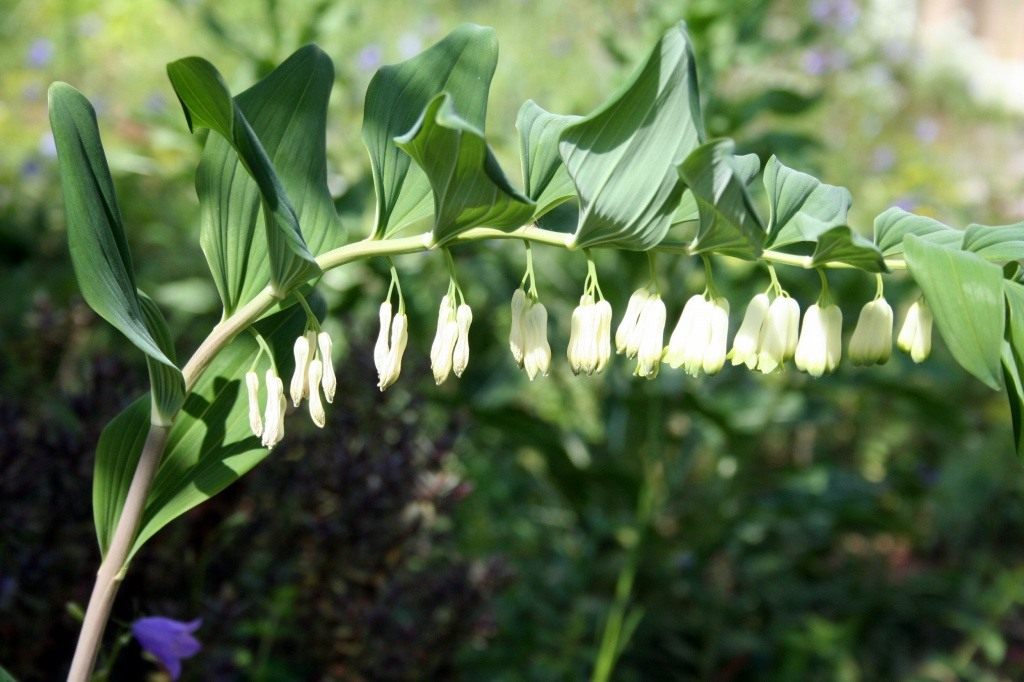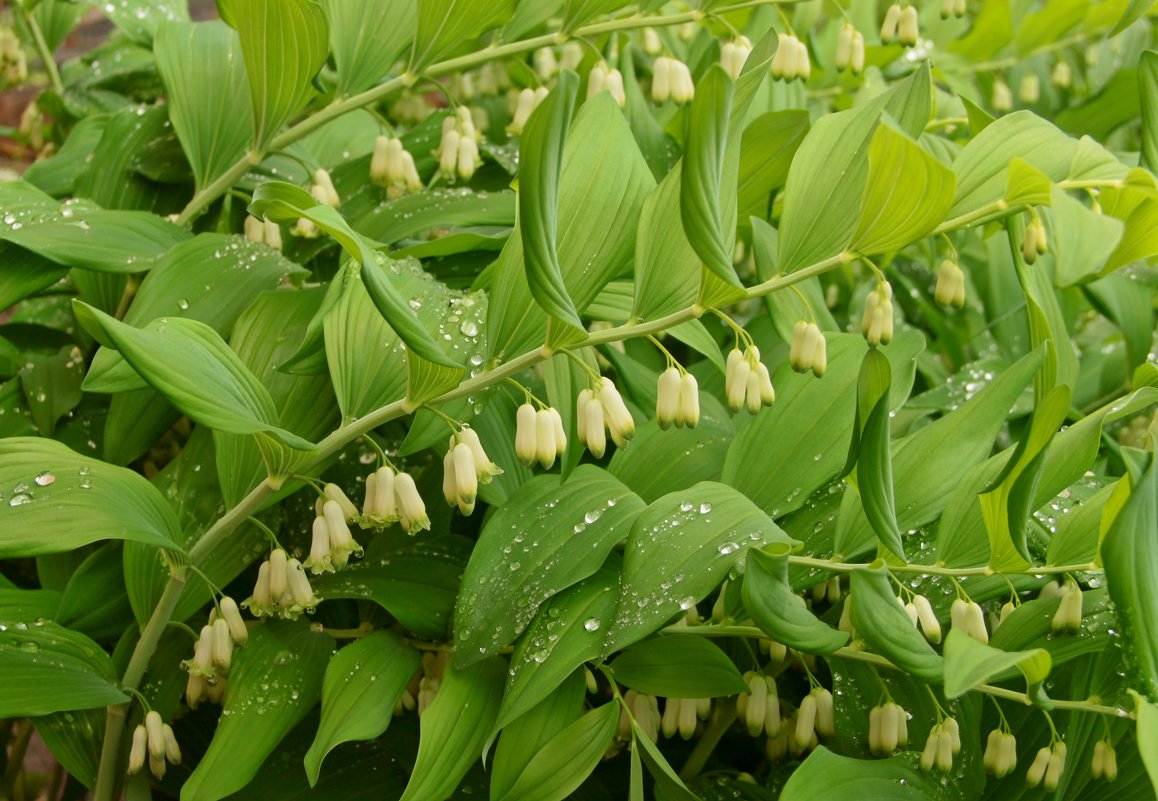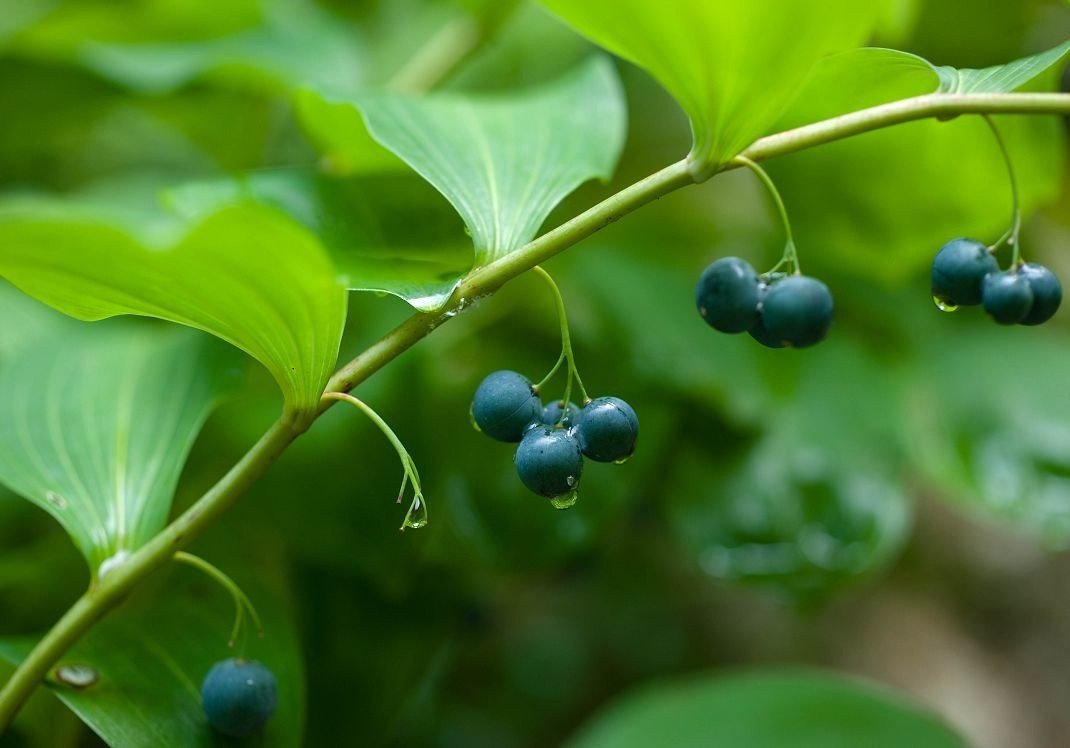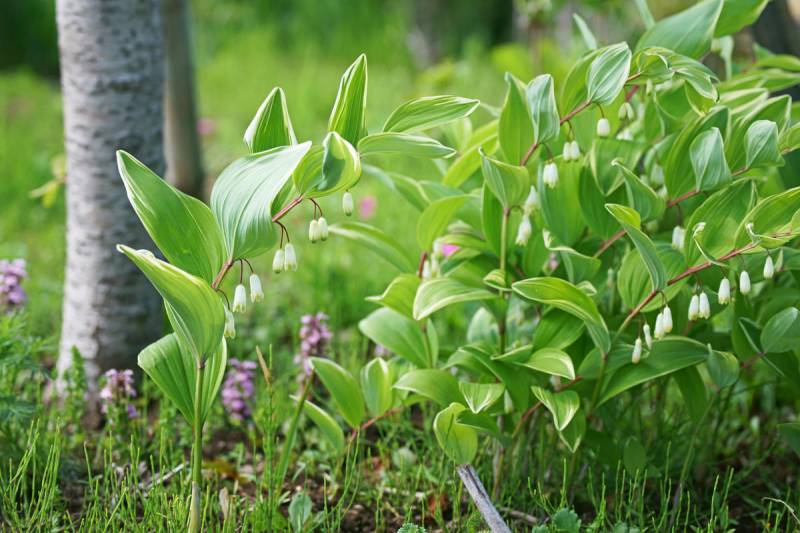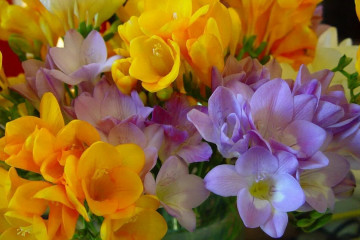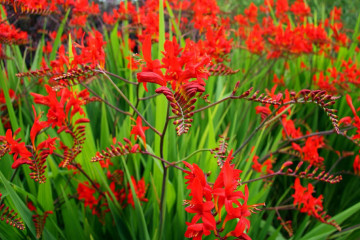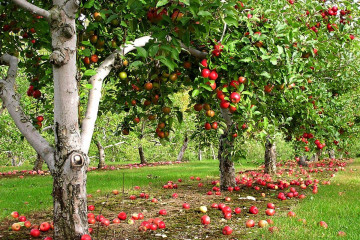Kupena multi-flowered - planting and care in the garden
Content:
In the meadows and hillsides of the subtropical and temperate zone of the Northern Hemisphere, you can find a herbaceous perennial from the Asparagus family with miniature flowers similar to lilies of the valley. This flower is called kupena. It has long been famous for its useful and healing properties, as well as excellent decorative qualities.
The origin and appearance of the plant
Kupena multiflorous is a typical forest flower. Currently, there are about 50 types of kupins, but the most popular are fragrant, multi-flowered and medicinal.
You can meet this plant not only in personal plots and gardens, but also in glades, forest edges, as well as meadows and forest-steppe zones. Outwardly, many people confuse the plant with lily of the valley. Their main difference is that the stems of the lily of the valley are short and straight, while those of the kupena are long.
Despite the fact that the flower has a simple appearance, it stands out for its expressive personality and touching beauty that cannot be confused with other plants.
The Kupen flower grows to a height of 120 cm. The rhizome is thick, horizontal, scaly and knotty. Stem glabrous, cylindrical, arcuate bent towards the top. The leaves are deep green in color, oblong or elliptical, slightly tapering towards the base. Flowers are located on bare pedicels, grow up to 1.5 cm long, do not smell. Flowers are formed in the axils of the leaves and are collected in 3-5 pieces in small inflorescences. The plant blooms in late spring - early summer. After flowering, berries are formed in black and blue.
Kupena multiflorous has been known since ancient times. The birthplace of the flower is the Northern Hemisphere. It is there that the flower lives in natural conditions. It got its name because of its appearance. When you look at a plant, you get the impression that you are looking at a pile or green pile. It is because of this comparison that the peoples of ancient Russia called the flower exactly kupena. If we recall the Latin reference books, then in them the plant is called Polygonatum. While in everyday life they are often called "Garden lily of the valley".
Why is this flower dangerous?
The multiflorous kupena is a poisonous plant, despite the fact that it is used for medicinal purposes. If you do not follow the rules when working with a plant, then it can cause poisoning and severe vomiting. Therefore, it is strictly forbidden to independently prepare decoctions and other means from it. The most dangerous parts of a flower are fruits and rhizomes.
Combination with other plants
Kupena flower goes well with daylilies and irises. It is also often planted in flower beds with tulips to hide their swelling. The flower adjoins well with all plants that feel great in partial shade. These include:
- ferns;
- dicenter;
- hellebores.
With all the flowers listed above, as well as variegated plants, the multi-flowered one will perfectly coexist.
Kupena in landscape design
In any garden or flower garden, the decorative thickets formed by the bought will be welcome guests. It is thanks to them that unsightly and empty areas can be hidden, making the place attractive and cozy. Often the flower is used for planting trees near the trunk circles.
It is impossible to miscalculate using a garden lily of the valley in landscape design. The plant, even after flowering, will maintain the composition thanks to the green gracefully curved leaves. Often, gardeners will plant a flower along the hedges.
Other popular garden varieties
Despite the fact that in nature there are many varieties of kupena, most often you can find only kupena variegated, medicinal, fragrant, broad-leaved, squat and multi-flowered. All of these plants thrive in shaded areas or where diffused light predominates.
- The squat is small in size, therefore, the people began to call it the low one. The plant reaches a height of only half a meter. The flowers are white with a pink tint.
- In the broad-leaved kupena, the stems are faceted, lowered from above. At the same time, a thickened and very fleshy root. The leaves are arranged in two rows and face clearly to one side. They are green above, and glaucous below. It is this feature that gives the flower a charming appearance.
- Kupena variegatum is considered another popular species. Thanks to this plant, even in dim and dull corners, you can create spectacular compositions. The main difference of this flower is the leaves with white longitudinal stripes.
Medicinal and fragrant bought are considered the most common, so they should be given special attention.
Medicinal purchase
The perennial plant belongs to the asparagus family and grows in shady places. The bushes do not exceed half a meter in height. The flowering period occurs in late spring - early summer. After flowering on the bushes, fruits are formed that have a strong emetic effect. Many people call this type of drugstore.
It is also used to rid livestock of parasite larvae. For the manufacture of medical fees, all parts of the medicinal product are used. With their help, funds are obtained that have the following effect:
- expectorant;
- pain relievers;
- decongestant;
- blood-purifying;
- enveloping;
- hemostatic;
- tonic.
The plant is also effectively used in cosmetology. Thanks to the products that contain this plant, cosmetics are made that help to lighten and restore the skin.
Fragrant Kupena
The plant has high medicinal properties. Decoctions and tinctures are made from it.
The fragrant kupena grows to a height of 80 cm. In nature, the flower can be found on the slopes of low mountains and hills, as well as in forest glades and in the shady thickets of the forest. The leaves stand out in bluish-green hues. The plant blooms from mid-May for five months.
Growing conditions
For its pleasant appearance and unpretentious disposition, the multi-flowered one is appreciated by gardeners. It is used to decorate both botanical gardens and small backyards. It is planted both in open ground and in pots.
Features of growing from seeds
You can grow an ordinary multiflorous kupen from seeds. But this method is rarely used, since it is considered very troublesome. In addition, the plant does not often bear fruit. This happens as a result of the fact that the structure of the flower does not allow ordinary insects to collect nectar and pollination does not occur properly.
Complicating the process of growing from seeds is the fact that the harvested seeds are not durable and are suitable for planting only for one season.
Before sowing, the seeds must be stratified for four months. Then they can be sown. To do this, you need to prepare a peat-sand mixture and place it in a bright and warm place.
You can sow seeds in the fall in open ground, but you should not hope for good germination.
When and how to plant the rhizome in open ground
Most often, gardeners prefer to propagate the flower by dividing the bush, in which case the kupena develops quickly, planting and leaving in the open field does not cause difficulties. Reproduction can be carried out at any time of the year. But it is best to plant a flower in open ground in late summer or early autumn.
To plant a multi-flowered garden flower, you first need to clear the place of weeds and dig up the soil to a depth of about 25 cm.After that, the plots are planted horizontally to a depth of 8 to 9 cm.Since the roots are fragile and geniculate, it will not be difficult to divide them.
Watering mode
Correct planting and caring for it guarantee that the flower will develop well - in a few years it will delight its owner with an attractive appearance. Care primarily consists in the selection of the watering regime, which differs depending on the type of flower.
Top dressing
The multicolored species is bought quite unpretentious to the composition of the soil, therefore it can grow even on depleted soils, while caring for the flower is very simple. To make the plant look attractive, it is necessary to plant it in humus-rich soil. If the kupena is planted in a pre-fertilized soil, then feeding can not be carried out for several years, since the plant will feed at this time and retain its properties.
When a perennial flower of the Lily of the Valley family is planted in poor soil, you will need to systematically apply fertilizer. This must be done twice a season. The first time the flower is fertilized in early spring, and the second - during the flowering period. Complex and mineral fertilizers are used for feeding.
Features of care during flowering and rest
During the flowering and dormant period, the flower does not require specific care. In order for the plant to please the eye, it is necessary to adhere to a certain formula.
Fertilization is required twice a year, to provide the flower with moderate watering throughout the season. Loosening of the soil must be abandoned, since there is a high probability of damaging the roots. Experienced gardeners recommend mulching to retain moisture.
Preparing for winter
According to the descriptions, when grown in the middle lane, there is no need to cover the plant for the winter. In autumn, it is enough to mulch the soil.
Peat with sand or sawdust is perfect for this. If the flower grows in a ventilated place, it should be covered with spruce branches for snow retention, which is removed in spring before young shoots appear.
Possible pests and diseases when caring for a bath
Kupena multiflora is classified as a highly pest and disease resistant plant. But certain problems are not excluded. During systematic rains and cold, the flower may be exposed to gray rot or powdery mildew. With such a lesion, it is necessary to eliminate the diseased areas and spray the bush with a solution of fungicides.
The main pest for the flower is Solomon's sawfly. It eats leaves to skeletal veins. In the fight against it, the use of insecticides has a positive effect.
In rare cases, slugs or caterpillars may attack the plant. Most often, they infect young shoots and leaves. It is best to deal with them with complex pest control products.
Kupena multiflorous is often used to create landscapes. In the wild, the plant can be found in meadows and hills. The plant grows excellently in partial shade, shade and under trees. This feature makes the flower very popular in landscape design. Growing, it creates dense thickets and prevents weeds. During the cultivation of the plant, there are no particular difficulties, since the care is very simple. The flower can multiply both by dividing the bush and by seeds. Among other things, garden lily of the valley is not just a beautiful plant, but also useful. Due to its unique medicinal properties, it is pickled, infusions and decoctions are made from it, which are subsequently used to treat numerous ailments.
